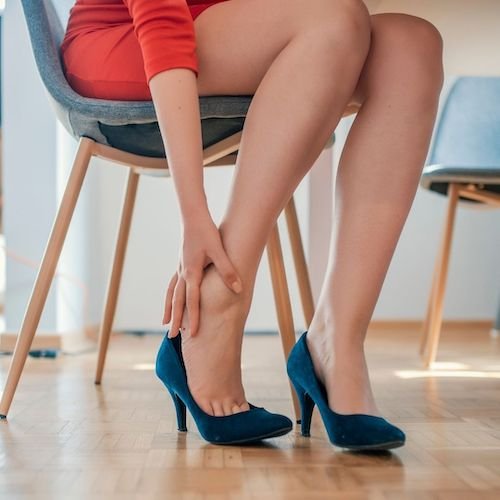High Heels – When Beauty comes With a Price
Stilettos. Wedges. Pumps.
Words alien to men. Wardrobe staples indispensable to many women.
Since the introduction of this footwear, “No Pain, No Gain” may well be considered as the universal motto of The High-Heeled Woman. But whether for fashion or as a work-related requirement, foot problems far more permanent than pain are slowly creeping into people’s consciousness. More and more people have come forward for surgeries related to wearing high heels.
Pain is an early indication of possible injury. If pain persists even if the foot is rested, this can already be an indication of a foot condition.
Beauty with a Price
So before you grab another pair of high heels (for you or for your woman), think about what you will really end up getting.
Hammertoes – Because of the unnaturally high arch the feet is forced into, the pressure on the heel decreases and the body tries to maintain balance by squeezing the toes together. Over time, the joints of the toes retain this “squeezed in” form even when wearing flat footwear.
Pump Bump – Medically known as Haglund’s Deformity, the pump bump is a bony formation at the back of the heel, resulting when the shoe’s (specifically pumps) rigid back lining rubs against the back of the foot. Constant pressure on this bump can lead to blister, bursitis, and pain on the Achilles tendon, among others.
Dislocation – Wearing high-heeled shoes decrease your feet’s control against a surface. And because the legs and feet become less stable, there is a far greater risk of falling, with that fall resulting to foot dislocation. This injury can go undiagnosed in its early stage, with people dismissing it as a bad sprain that would just go away after some rest and a session with the an ice bag. Yes, it will end up going away with rest and ice bag – after you’ve had your surgery.
For many women, however, not wearing those leg-extenders is not a choice so easily made. Flight attendants, models and celebrities, to name a few – there is either an unspoken or openly expressed rule that at some point, people in these professions will have to wear heels.
The Lesser Evil
So what can you do when you cannot do without?
Lower heels. A maximum of 2 inches. And even this height is more than what is actually healthy.
Thicker heels. The thicker the heel, the wider the surface coverage, the lesser the pressure.
Flatter platform shoes. If you really have to – or want to – use them, find one that has less arch.
High-heeled shoes, like neckties, are usually uncomfortable and basically exist for aesthetic purposes. But high-heeled shoes, unlike neckties, increases your risk of injury. Think twice. Better yet, think thrice. Contact Podiatry Group of Annapolis and let us help with all your foot and ankle needs. Dr. James Mckee and Dr. Adam Weaver are experienced and dedicated podiatrists who provide high-quality individualized care. Call us today at 410-224-4448 or visit us online to make an appointment at our conveniently located Annapolis office.

